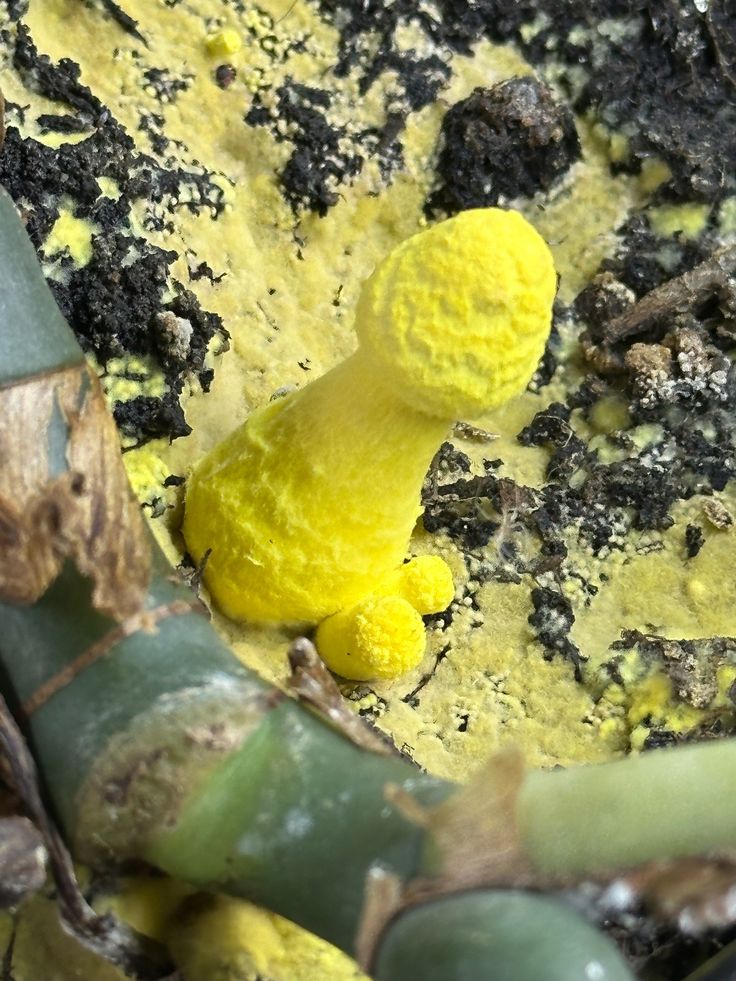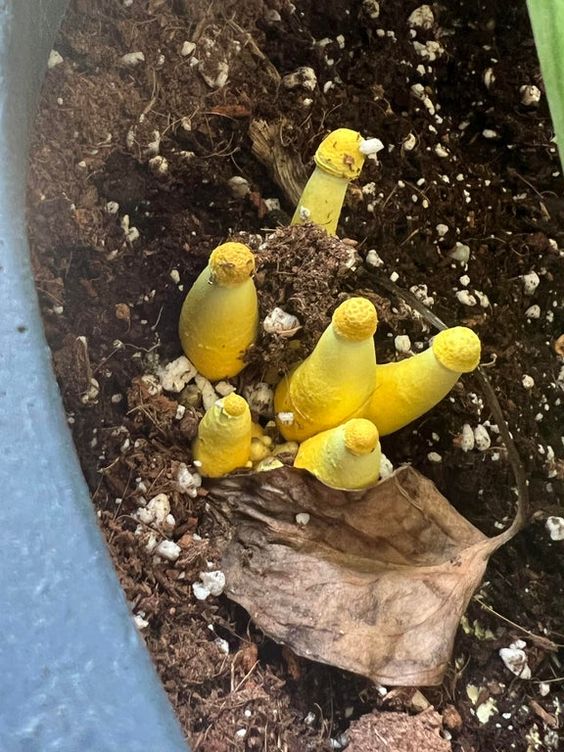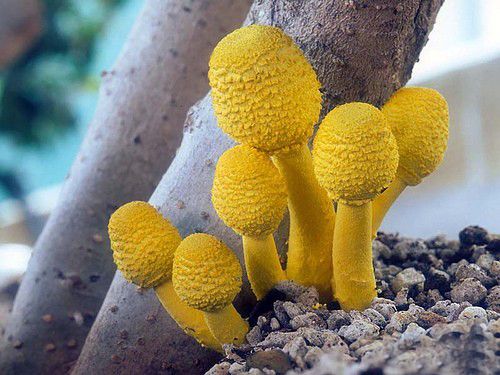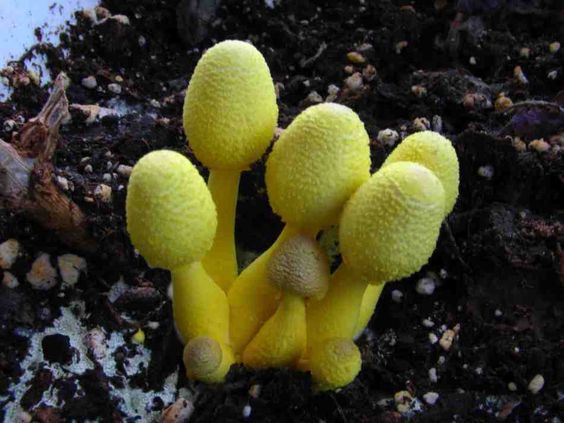Leucocoprinus birnbaumii, often referred to as the “flowerpot parasol” or “yellow houseplant mushroom,” is a captivating and enigmatic fungus that has found its way into homes around the world. This small mushroom, known for its vibrant yellow color and tendency to appear in potted plants, adds an unexpected touch of beauty to indoor environments.

Native to warmer regions, Leucocoprinus birnbaumii has become a global resident, thriving in the nutrient-rich soil of houseplants. Its striking appearance, with a bright yellow cap that can reach up to 5 centimeters in diameter, makes it a unique and visually appealing addition to the often-green surroundings of indoor flora.

One of the fascinating aspects of Leucocoprinus birnbaumii is its ability to seemingly appear overnight. Given the right conditions – humid environment, organic matter in the soil, and warmth – the mushroom can quickly emerge, surprising plant enthusiasts and homeowners alike. This rapid growth is not only a testament to the adaptability of fungi but also a reminder of the interconnectedness of the natural world.

While Leucocoprinus birnbaumii is not considered toxic, it is not recommended for consumption due to its bitter taste. Instead, its role in nature is to assist in the decomposition of organic matter, contributing to the cycle of nutrient recycling in soil ecosystems. In indoor settings, its presence is generally harmless to plants and humans, adding an aesthetic charm to the environment.
Beyond its visual appeal, the yellow houseplant mushroom raises questions about the intricate relationships between fungi, plants, and their surroundings. It serves as a reminder of the hidden biodiversity that exists within our homes, often unnoticed until these small marvels make their presence known.

As we admire Leucocoprinus birnbaumii, it prompts us to appreciate the delicate balance of nature even within our indoor spaces. Its emergence in potted plants invites us to marvel at the wonders of the microscopic world, sparking curiosity about the unseen ecosystems coexisting with our everyday lives.

In conclusion, Leucocoprinus birnbaumii stands as a testament to the resilience and adaptability of fungi, bringing a touch of unexpected beauty to our homes. As we nurture our houseplants, we may find ourselves sharing our living spaces with these tiny, yellow companions, reminding us of the intricate and often overlooked connections between the natural world and our daily lives.






